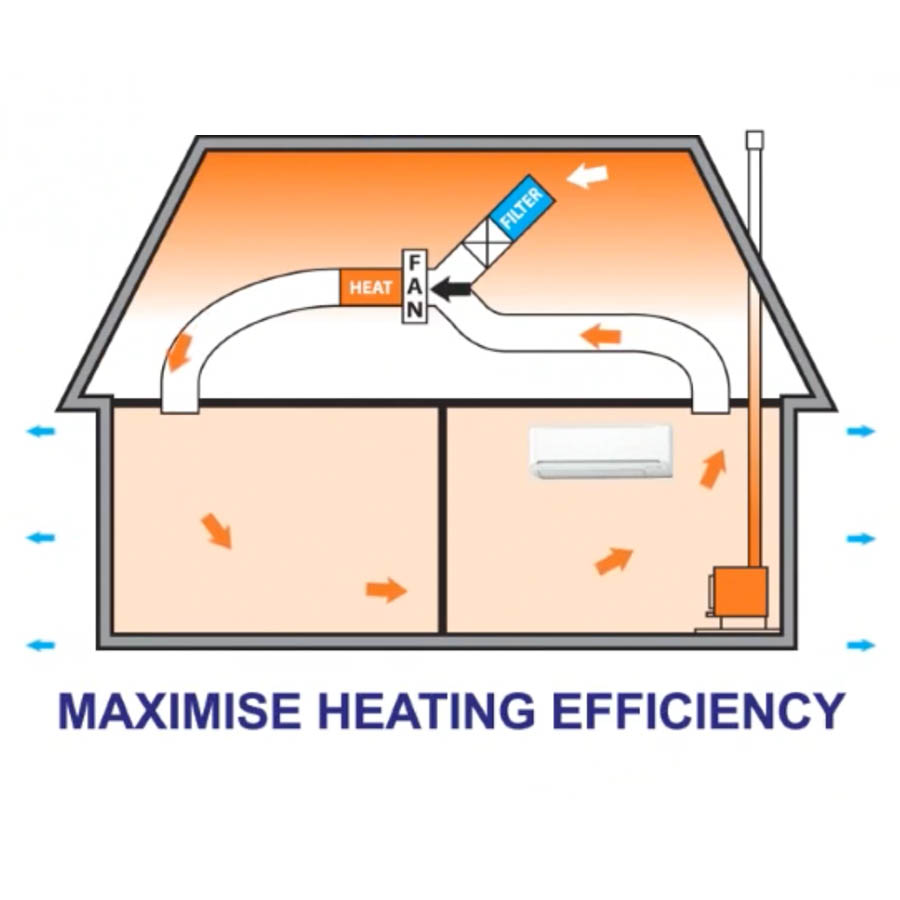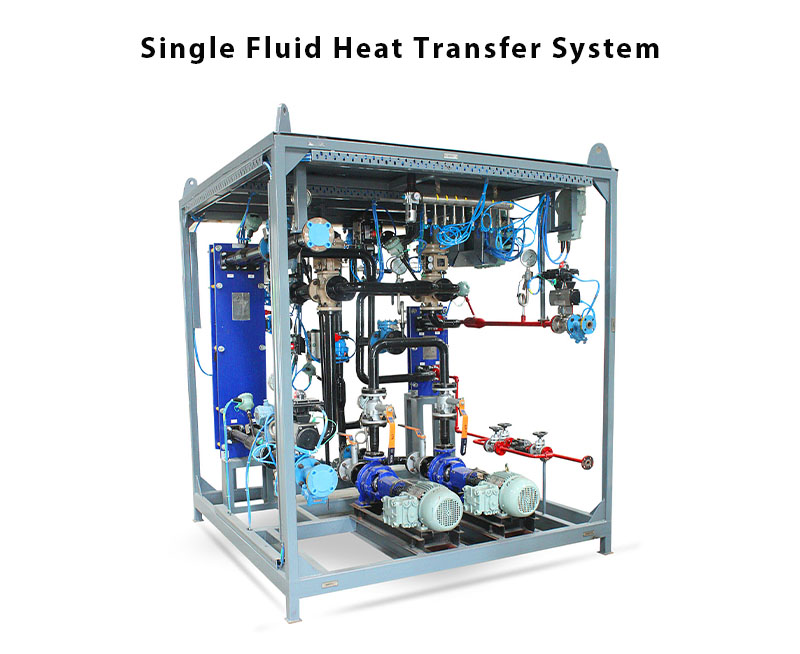Why Are DVS Heat Transfer Systems Ideal for Aerospace Thermal Solutions?
Wiki Article
Technologies in Heat Transfer Equipments: What You Required to Know for Ideal Performance
Technologies in Heat transfer systems are transforming performance across different sectors. Advanced products like graphene and nanofluids assure significant improvements in thermal conductivity. The combination of IoT and machine learning supplies possibilities for real-time surveillance and boosted power effectiveness. Nevertheless, the landscape of thermal administration is rapidly developing (DVS Heat Transfer Systems). Understanding these developments is important for achieving suitable system efficiency and sustainability in the future. What specific developments are shaping this transformation?Emerging Products for Enhanced Heat Transfer

Advanced Heat Exchanger Layouts
While traditional Heat exchangers have offered their function in numerous applications, advanced layouts are now emerging to satisfy the enhancing demands for efficiency and efficiency. These ingenious layouts, such as plate, shell-and-tube, and finned-tube Heat exchangers, incorporate enhanced surface area areas and boosted flow patterns to boost thermal transfer prices. Additionally, compact styles permit reduced room requirements without jeopardizing effectiveness. Advanced materials, such as compounds and corrosion-resistant alloys, in addition enhance longevity and performance under extreme conditions. In addition, simulation modern technologies and computational fluid characteristics are progressively used to fine-tune these layouts, guaranteeing peak Heat transfer characteristics. As sectors seek to minimize energy intake and optimize result, the adoption of sophisticated Heat exchanger designs is essential in achieving these objectives.The Duty of Nanotechnology in Heat Transfer
Nanotechnology plays a necessary role in boosting thermal conductivity within Heat transfer systems. By controling products at the nanoscale, researchers have actually achieved substantial enhancements in energy performance. These improvements not just enhance efficiency yet also add to even more sustainable energy remedies.Boosted Thermal Conductivity
Considerable developments in thermal conductivity have arised through the application of nanotechnology, revolutionizing Heat transfer systems across numerous sectors. By integrating nanoparticles right into Heat transfer fluids and products, scientists have actually achieved impressive increases in thermal conductivity. These nanoparticles, such as carbon nanotubes, graphene, and steel oxides, enhance the Heat transfer homes due to their high surface area and special thermal attributes. The resulting compounds show boosted efficiency in applications varying from electronic devices cooling systems to renewable resource technologies. Furthermore, the capability to tailor the dimension, form, and make-up of nanoparticles allows for optimized thermal management services. Because of this, nanotechnology remains to play a pivotal duty in the advancement of extra reliable and effective Heat transfer systems, leading the means for improved industrial applications.
Power Performance Improvements

Assimilation of IoT in Heat Transfer Equipments
The integration of IoT in Heat transfer systems introduces the execution of wise sensing units that enhance functional performance. These sensors make it possible for real-time data tracking, permitting instant adjustments and optimizations. This technical development has the potential to substantially improve efficiency and power management in Heat transfer applications.Smart Sensors Implementation
As Heat transfer systems progress, the integration of wise sensing units through the Web of Points (IoT) has actually arised as a transformative approach. These sensors make it possible for real-time monitoring of flow, stress, and temperature prices, enhancing system efficiency and dependability. By gathering and transferring information, they assist in positive upkeep, decreasing the danger of system failings. Additionally, wise sensing units contribute to energy savings by refining operational parameters based on ecological problems. Their ability to assess anomalies and fads enables educated decision-making, guaranteeing peak efficiency of Heat transfer systems. As markets significantly embrace this technology, the implementation of wise sensors stands to revolutionize just how Heat transfer systems are managed, leading the way for greater sustainability and boosted efficiency end results.Real-Time Information Monitoring
How can real-time information checking boost the performance of Heat transfer systems? By incorporating Web of Things (IoT) innovation, Heat transfer systems can take advantage of constant information collection from smart sensing units. This real-time monitoring enables for instant analysis of stress, flow, and temperature level prices, making it possible for operators to determine inefficiencies promptly. Subsequently, changes can be made to enhance performance, decrease energy consumption, and prolong equipment life expectancy. Furthermore, predictive maintenance can be implemented, minimizing unexpected downtime and expensive repair services. The learn this here now capacity to visualize performance metrics with control panels boosts decision-making, fostering a proactive strategy to system administration. Inevitably, real-time data keeping an eye on not only boosts operational effectiveness but likewise adds to sustainability objectives within commercial processes.Power Efficiency and Sustainability Trends
Energy effectiveness and sustainability patterns are improving the landscape of Heat transfer systems, driving innovation and conformity throughout different markets. Organizations are progressively prioritizing energy-efficient styles to minimize operational prices and reduce environmental influences. The assimilation of sustainable energy resources is coming to be much more prevalent, making it possible for Heat transfer systems to operate sustainably while fulfilling regulative needs. In addition, advancements in technologies and products advertise lower power consumption and boost total performance. Lifecycle evaluations are additionally getting grip, allowing firms to assess the environmental effect of Heat transfer systems from production to disposal. This concentrate on sustainability not just supports company duty but additionally placements organizations competitively in a market where customers progressively prefer environmentally friendly services. As a result, power effectiveness and sustainability continue to be important factors to consider for future developments in Heat transfer modern technology.Advancements in Thermal Monitoring Solutions
While the need for efficient Heat transfer proceeds to climb, advancements in thermal monitoring solutions are emerging to attend to both performance and sustainability obstacles. Advanced products, such as phase adjustment materials and nanofluids, are being created to boost Heat transfer effectiveness - DVS Heat Transfer Systems. These products improve thermal conductivity and permit much better temperature level regulation in various applications. In addition, modern technologies like energetic thermal control systems are getting grip, allowing real-time changes to take care of Heat flow successfully. These systems contribute to power savings and decrease the environmental impact of thermal procedures. The integration of IoT in thermal monitoring promotes surveillance and predictive maintenance, making certain maximized performance and long life of Heat transfer systems. Overall, these technologies represent substantial strides toward even more lasting thermal administration techniquesFuture Instructions in Heat Transfer Innovation
Arising improvements in thermal monitoring solutions indicate a promising future for Heat transfer technology. Scientists are progressively concentrating on creating materials with remarkable thermal conductivity and boosted energy efficiency. Advancements such as nanofluids, which include suspended nanoparticles, provide significant improvements in Heat transfer efficiency. In addition, the integration of clever materials that adapt to differing temperature level problems is gaining grip, permitting even more reliable and receptive systems. The surge of additive manufacturing strategies is additionally enabling the style of complex Heat exchanger geometries that maximize liquid flow. Additionally, the implementation of equipment learning algorithms is expected to revolutionize the optimization of Heat transfer systems, helping with anticipating maintenance and efficiency enhancement. Collectively, these developments are positioned to transform the landscape of Heat transfer technologies in numerous markets.
Often Asked Questions

Exactly how Do I Select the Right Heat Transfer System for My Application?
Choosing the ideal Heat transfer system involves examining application requirements, including temperature level arrays, liquid buildings, and effectiveness demands. Examining system types, upkeep factors to consider, and cost-effectiveness also plays a vital duty in making an informed choice.What Are the Maintenance Requirements for Advanced Heat Exchangers?
Maintenance requirements for innovative Heat exchangers normally consist of routine assessments, checking for leakages, cleansing of surfaces, and ensuring excellent circulation prices. Following maker guidelines warranties reliable procedure and lengthens the devices's lifespan.
How Do Ecological Variables Affect Heat Transfer Performance?
Environmental factors substantially affect Heat transfer performance. Variants in temperature level, moisture, and air flow influence thermal conductivity and convective Heat transfer, eventually affecting system efficiency and requiring consideration during the style and procedure of Heat transfer systems.What Security Standards Put On Heat Transfer Systems?
Safety requirements for Heat transfer systems typically include guidelines from companies such as ASME and ASTM. DVS Heat Transfer Systems. These standards address materials, design, and functional techniques to guarantee dependability, effectiveness, and protection versus hazards in numerous applications
Exactly How Can I Repair Common Heat Transfer System Issues?
Fixing usual Heat transfer system issues involves you can try these out inspecting for leaks, making certain proper fluid circulation, examining insulation stability, and verifying temperature differentials. Recognizing these factors can help preserve system efficiency and protect against further issues.Nanotechnology plays an important duty in improving thermal conductivity within Heat transfer systems. Considerable innovations in thermal conductivity have emerged with the application of nanotechnology, check these guys out reinventing Heat transfer systems throughout different sectors. Improvements in thermal conductivity through nanotechnology have actually led the method for amazing enhancements in energy efficiency within Heat transfer systems. Power performance and sustainability patterns are reshaping the landscape of Heat transfer systems, driving technology and compliance across different industries. The combination of IoT in thermal administration facilitates surveillance and anticipating upkeep, making certain optimized efficiency and longevity of Heat transfer systems.
Report this wiki page